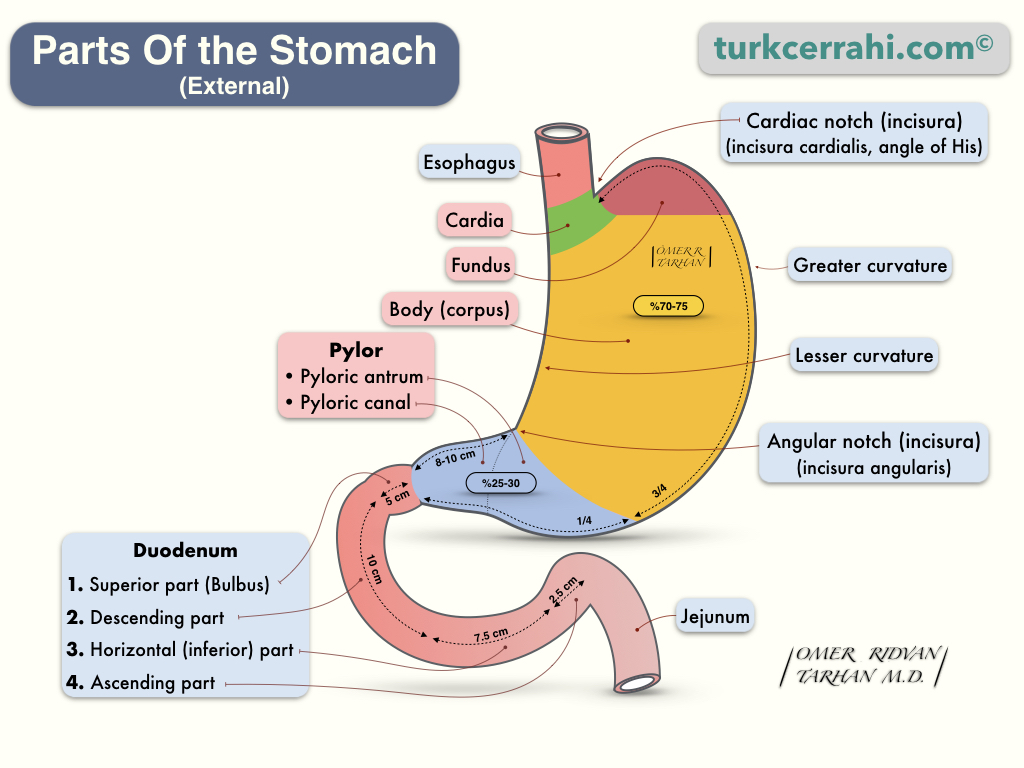Stomach - Overview

The global incidence of gastric cancer is quite high, and it is on the rise (5th in men). As a result, stomach diseases are the most frequently encountered diseases by surgeons and internists.
Postgastrectomy syndromes are common because the anatomy and physiology of the stomach change after gastric surgery. Dumping syndrome, diarrhea, gastric stasis, alkaline reflux gastritis, Roux syndrome, gallstones, weight loss, and anemia are a few examples.
The stomach is a muscular organ of the digestive system that can expand. It is located between the esophagus and the duodenum. It is on the left, in the upper part of the abdomen. It serves in the second phase of digestion (following chewing).
The stomach physically (peristalsis) and chemically (acid, protease enzymes, pepsin) breaks down food. The proximal part of the stomach (fundus, corpus) stores food, while the distal part (antrum) mixes and grinds it. As a result, a semi-fluid material called chyme is formed.
The stomach also has endocrine functions and regulates the feeling of satiety.
The majority of people have experienced stomach issues at some point in their lives. Indigestion and heartburn are common problems. You can solve some stomach problems by using over-the-counter medications and making lifestyle changes, such as avoiding fatty foods, eating slower and less, and losing weight.
You should definitely see a doctor if you have any of the following complaints:
- Presence of blood in the stool (black or red)
- Bloody vomit (black or red)
- Severe abdominal pain
- Heartburn, abdominal pain that does not go away with antacids
- Unwanted weight loss
- Ongoing vomiting or diarrhea